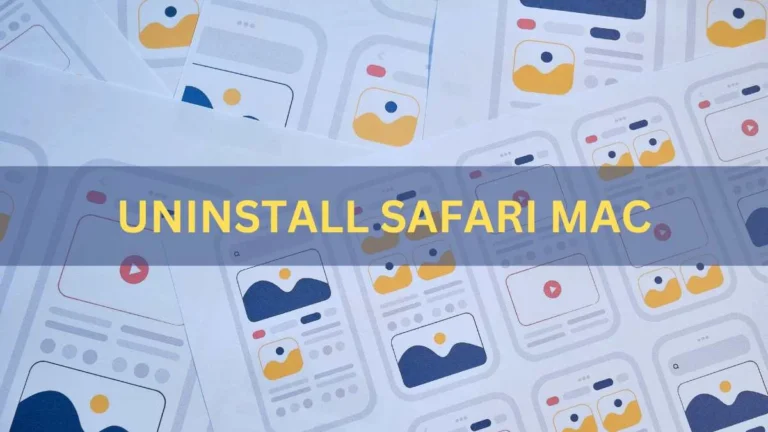Safari, the default web browser developed by Apple, is deeply integrated into the macOS operating system. While it is known for its efficiency and seamless integration with the Apple ecosystem, some users prefer using alternative browsers like Chrome or Firefox. This preference might lead them to consider removing Safari from their Mac. However, the process of uninstall Safari mac is not straightforward and comes with several implications due to the browser’s integration with macOS. In this article, we will explore why uninstall Safari mac is complicated, the risks involved, and alternative solutions to manage Safari without removing it from your system.
Why Uninstalling Safari Makes Little Sense
Safari, being a system application, is intricately woven into macOS. Here are the main reasons why uninstall Safari mac is generally not recommended or feasible:
- Minimal Impact on Space: Safari is a lightweight browser that doesn’t occupy much disk space. Even if not used, it doesn’t accumulate significant caches or other large files that might deter system performance.
- System Integrity Protection (SIP): Introduced in macOS El Capitan, SIP is a security feature that prevents potentially malicious software from modifying protected files and folders on your Mac. This includes system apps like Safari. In macOS versions where disabling SIP is possible, removing Safari is risky and can lead to system instability.
- Automatic Reinstallation: In older macOS versions that allow Safari’s removal by disabling SIP, any macOS update will automatically reinstall Safari. This renders the effort to permanently remove it rather ineffective.
- Security Risks: In the latest macOS versions, such as Monterey, Ventura, and Sonoma, even if you disable SIP, the Safari binary remains. This design choice is intentional to prevent the removal of built-in apps that are critical for the system’s integrity and security.
Alternative Solutions to uninstall safari mac
Since removing Safari can lead to various issues, including potential system instability and security vulnerabilities, it is advisable to look for alternative solutions to manage the browser without uninstalling it. Here are a few approaches:
1. Resetting Safari Using CleanMyMac X
Instead of uninstalling, consider resetting Safari to its original state. This process removes all personalized settings, history, cache, and extensions, essentially returning it to its default setup. Tools like CleanMyMac X offer a straightforward way to reset Safari:
- Download and Install CleanMyMac X: Ensure you download this application from a reliable source to avoid counterfeit software.
- Navigate to the Uninstaller Tool: Open CleanMyMac X, go to the ‘Uninstaller’ section, and find Safari.
- Choose the ‘Reset’ Option: Instead of choosing to uninstall, select the reset option. This will clear all the user data associated with Safari without removing the application itself.
2. Manually Clearing Safari Data
If you do not wish to use third-party software, you can manually clear most of the user data in Safari:
- Clear History and Website Data: Go to Safari > Clear History, and choose how far back you want your browsing history cleared.
- Manage Website Data and Cookies: In Safari, go to Preferences > Privacy, and click on ‘Manage Website Data’ to see and remove stored data from specific sites.
- Remove Extensions: Go to Safari > Preferences > Extensions. From here, you can uninstall any extensions you no longer need or that could be slowing down your browser.
Conclusion
Uninstall Safari Mac is not only challenging due to the protections Apple has put in place but also potentially harmful to the stability and security of your system. Instead of attempting to uninstall Safari, resetting the browser or manually clearing data offers a safer and more effective way to manage its footprint on your device. These methods ensure that you can continue to use your Mac without unnecessary risks while keeping your system running smoothly. By understanding the limitations and risks associated with removing essential system applications like Safari, users can make more informed decisions about managing software on macOS.
FAQs
- Why is it difficult to uninstall Safari from macOS?
Safari is a system application protected by macOS features like System Integrity Protection (SIP), making it integral to the system’s stability and security. - Can I permanently remove Safari from my Mac?
No, even if Safari is removed by disabling SIP on older macOS versions, system updates will automatically reinstall it, ensuring its presence on the system. - What are safer alternatives to uninstalling Safari?
Instead of removing Safari, you can reset it using tools like CleanMyMac X or manually clear its history, cache, and extensions to manage its data without risking system issues.
